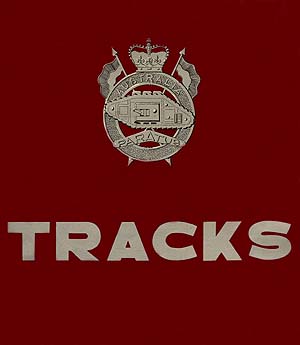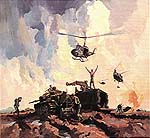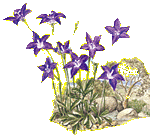Tracks Magazine - August 1955


A couple of decades ago I was travelling through northern NSW and called in to see Archie McDonald, an old 1 Armoured Regiment LAD mate. Archie had kept his copy of the first issue of the Regiment's glossy magazine, Tracks — August 1955. It is this magazine that is re-produced below
Tracks Magazine
Index
Foreword Preface Principles of Employment of Armour Tracks To Tradition Keep An Open Mind Review of Squadron Activities Regimental Headquarters Headquarters Squadron Reconnaissance Troop A Squadron Notes B Squadron Notes Nucleus Squadron Regimental Training Troop Light Aid Detachment, RAEME Signals Troop, RASigsIndex (cont)
Review of Allied Armour Tanks in The Jungle Equipments 1954 .. A Royal Occasion On Parade Elevating Gear Officers' Mess Notes Sergeants' Mess Notes In The Realm of Sport It Could be You The Adjutant's Dilemma While Others Sleep [et al] Beauchamps Own Epilogue Free Verse From A Free Thinker
Korean Sidelights
Threads of a Great Tapestry
The Battle of the Imjin has now been woven into the great tapestry of the military past. It has confirmed the standards by which British soldiers in battle have been recognized through ringing centuries.
It must also be remembered that — in the first night and day of the conflict — the Belgian Battalion by their lonely and unfaltering action beyond the river, became more truly and integrally a part of the Brigade, than even those who knew and valued them most could anticipate.
The Centurions fought in terrain for which they were never built. C Squadron, commanded at first by Captain Ormrod — and then by Major Huth returning from leave, took extravagant toll of the swarming enemy. Troops were committed to missions which entailed a certain cost of sacrifice — but missions that saved the existence of a whole Brigade.
The enemy attacked, as before, by the full moon's light. During the first hours of battle, the tanks lay silent and immobile in their leaguer, lapped by the furious rolling of gunfire in the hills
At five o'clock they moved out of harbour, but were held up again by a thick ground mist blanketing the roads and ridges. As the mist melted, they passed on up the road through fire directed at the Ulster Company. They were carrying a Troop of Sappers under Captain Desmond Holmes, acting as Infantry for the day, and these were to play a noble and effective part in the day's engagement. They and Lieut. David Boyall's troop were dropped off to remain with the Ulster Company and keep the road open at that important point. The rest of the tanks, comprising Three Troop, two carriers, Four Troop, and the Command tanks of Captain Ormrod and Captain Murray, continued north. Lieut. Radford, in the leading troop, came under very heavy, accurate mortar fire. The column was ordered to close down hatches and press on — but due to the lingering fog all periscopes were misted, and two tanks of Three Troop went off the road into the Paddy. The first stopped, sensibly, and awaited a slackening of the fire. But the second plunged into further difficulty and threw both tracks. In the steep, rocky country, with no accompanying Infantry, the tanks were open to close range attack and there were perhaps two hundred in the area of this steep bend. One Chinaman leapt out from a ditch and threw a sticky bomb slap against the side of Lieut. Radford's tank. It exploded, blowing a hole through the skirting plate, but leaving the suspension undamaged. Chinamen were now swarming among the rocks and bushes beside the road, but the closed-down tanks managed, by alert inter-support, to shoot them off each other's backs and turrets. The enemy had clearly chosen this place as a death-trap, and stationed a determined unit to effect our downfall. Captain Armrod and Sgt. Reekie turned to offence so vigorously that they had the Chinese on the run — dodging apprehensively from cover to cover. A group of them took shelter in a nearby house, and two H.E. shells at fifty yards' range cooked their goose. Lieut. Radford meanwhile pushed on to the Northumberland H.Q., where all were in ignorance of what the savage outburst of firing behind them signified.
This was the critical hour, when the withdrawal, as planned, became impractical — and decisions had to be taken rapidly, at many places, by the officer on the spot. A co-ordinated wave of Chinamen swept down the hills all along the west of the valley. The closeness of the enemy enforced periscope-direction upon the commanders, and yet they must contrive to fight off Chinamen at every point. This attack was clearly due to be followed up by others, and there was a very realistic danger of all the tanks being cut off irrecoverably, by Chinese straddling the south end of the valley. The Ulsters were now cutting over the hills to the west, making no attempt to follow the road. Captain Murray was ordered to destroy the second tank he had been trying to recover — and replied, 'Much against the grain, I obey your order!' He laid and completed the demolition, sheltering behind the A.R.V., which had moved into place for the purpose. From then on, minutes counted — to be carefully measured against yards. Lieut. Radford from the south, reported the enemy were all over the valley floor. Part of the Ulster Reserve Company, with the Sapper section, made off across the hills — some mounted the tanks for the dash down the now hostile valley.
Few of the latter survived. The tanks ran the gauntlet of treacherous ground and bomb-throwing, Chinamen. Two tanks were knocked out by sticky bombs — Infantrymen, packed thickly on the tanks, were falling off like flies under the close quarters fire of the clustering Chinamen. As the last tanks came through the Ulster Reserve Company position, Lieut. Boyall was still poised like, mountain goat on his hilltop, and he and his troop were effectively picking off Communists on the slopes above the road, so that an area of relative calm existed on this stretch of road itself. Captain Miller withdrew his Company rapidly — and led the way east, though many of his riflemen chose to mount tanks. Captain Homes rushed out to recall an outlying section of Sappers. From further back along the valley, our doctor, Captain Patchett, who had been working with great courage all day, treating and clearing the wounded in his half-track, was heard over the aid. He said, 'I am about to be captured ...' and a moment later, 'I have been captured!'
Captain Ormrod's tanks had forced their way down the last lap of the valley through milling Chinamen. They could see what was estimated at 2,000 more, swarming down the western hillsides, from the heights where they had been held up all day. The Centurions came through, crushing enemy under their tracks. Sgt. Cadman found a Chinaman battering at his turret to get in, and directed the tank straight through the wall of a house, to brush him off, and then ran over an M.G. post beside the road. Cornet Venner, who had behaved with great gallantry at every stage of the day's fighting, lost his scout-car, but guided one Centurion out of trouble and escaped, wounded, himself. Captain Ormrod was wounded in the head by a grenade. Three platoons of Infantry suddenly appeared, in parade-ground order, out of the river bed — and were blown to confusion with some of the last ammunition the tanks carried. Some tanks took to the paddy and were ploughing-in Communists, crouched under every bank. The firing was a continuous iron rain on the outside of the tanks, and only a small proportion of the Infantry on the top survived this death-ride. The tanks came out of the valley to see the Belgians leaving their ridge, that all day had guarded this southern opening.
Momentarily, contact with the enemy had been broken, but no more than a short breathing space was to be vouchsafed. The Ulsters and a few Northumberlands who had cut across out of the valley, were now climbing through the hills towards the M.S.R. Most of the Centurions, loaded with dead and wounded Infantry, with their ammunition exhausted, were ordered to drive straight on past the place where the tanks of the Squadron-Leader and Lieut. John Lidsey, of R.H.Q., were stationed.
The full importance of Captain Ormrod's force had not been foreseen in the morning's planning. Their mission had proved vital, and without their presence in the valley, their skilful management, and the courage of the crews, the whole of the Northumberland and Ulster Battalions might well have been over-run. But the most distinguished single action of the day still lay ahead.
It began with disaster. When the tanks of Lieut. Paul's troop came in, behind the others, to the area of the night leaguer, they were halted, and an effort was made to tow the lame tank, to accelerate the speed of withdrawal. As this was being done, bullets began to sweep through the trees and enemy appeared again on the nearby hills. A stray bullet hit the phosphorus grenade in one of the open dischargers on the front tank, and ignited it. The burning phosphorus foamed out, and the turret was so traversed at the time that it flowed into the engine setting the whole tank on fire. The Belgian Colonel, who was standing beside this tank, was also badly burned and evacuated. With one blazing tank and one lame, Major Huth ordered that both should be abandoned, and moved his own up to put an A.P. shell through the turret of each, at fifty yards range.
He then traversed his turret left and engaged Chinamen at a distance of seventy yards. As he faced them over the back of his tank, he was aware that scarcely that distance behind him, the last Belgian soldiers were making their way through the trees. For three deliberate minutes, he did not budge, but swinging his turret this way and that, firing long bursts of Besa while bullets smacked against his armour, he held down the advance; then, when only absolutely necessary, he ordered the driver to advance-fast! A hundred yards back, outside the grove where the leaguer lay, Lieut. Lidsey was waiting, and the two tanks joined, and continued the delaying action as Chinamen came out from among the trees. Then, seeing over his shoulder that the Infantry had placed an acceptable distance between themselves and the enemy, on Major Huth's order they pulled back more rapidly along the road.
In fact, scattered fire had already been opened, and to protect the Infantry who had not yet reached the road, Major Huth and Lieut. Lidsey, in the only tanks now available, had to move slightly forward to meet it, and force back the leading enemy. This they accomplished, but only for a few minutes — before the enemy thickened and spread their advancing line. The paddy-country gave them admirable concealment for a close approach, and even the most intense alertness was hardly sufficient to watch every foot of cover and gauge the activity behind it. Slowly, in turn, the two tanks gave ground. Some straggling bands of Infantry were making for a point on the road further removed from the shooting and closer to the M.S.R. On the road itself, the nearest Infantry were a hundred and fifty yards beyond the tanks and moving as fast as they could. The enemy came forward at a remarkable pace, taking up fire-positions behind the banks, ignoring losses inflicted at every bound. From the turrets of the two tanks it was easy to observe, at a distance of seldom greater than a hundred yards, and frequently no more than fifty, the losses suffered in the enemy's line. Major Huth so accurately measured his own fire-power against the fire and speed of advance of the enemy, that he imposed the minimum rate of advance upon them, allowing the Infantry precious minutes of extra safety. He was hampered by the presence of personnel on the outside of his own tank, but in the whole action none of these were seriously wounded, and so far as is known not a single casualty was caused among the weary infantry on the stretch of road in his rear. More American infantry joined the column enroute, and came under the protection of his two tanks. Two other tanks returned to join him at this point and strengthened the escort.
Before the withdrawing Infantry had reached safety, the powered traverse of Major Huth's tank failed and it became impossible to bring fire to bear speedily where required, from the co-axial machine gun. Fire was continued by Brens and other automatic weapons from this tank, and the enemy were still kept at a distance without the speed of retirement being increased. In many instances it was necessary to engage at right-angles to the axis of withdrawal. Not until the last infantryman was seen to have reached the M.S.R., where more powerful friendly gun-power was available to them, did Major Huth give orders to draw out of the enemy's reach.
Lieutenant Lidsey, whose tank was closer to the enemy throughout, showed an admirable coolness and bravery vital to the operation, in carrying out Major Huth's instructions. His humour and clarity of judgment must have set an inspiring example to his crew. But it was Major Huth's own example of skill and determination which made all those present in the action proud to obey his orders to the best of their ability.
The last shot fired by Major Huth ended the Battle of the Imjin.
The Cold So Cold
C Squadron remained in the Brigade sector, and on Sunday the 6th it was split into two half-squadrons: one under Major Huth in support of the Northumberlands, with a troop to the Glosters — the other under Captain Strachan in support of the Ulsters. An attack was expected at three o'clock the following morning, and an all-night stand-to was maintained. The temperature was 20° below freezing, but no attack came in. The enemy were known to be in Suwon, and the Brigade were watchful. Wednesday was a night of still more intense cold and fog, through which armies or refugees poured into our lines, and were passed back.
Further days of indescribable cold followed. The Squadron-Leader put a flask to his lips, and the skin came away on the metal. It was dangerous to touch the side of a tank with the bare hand. To shave in the morning, a metal razor had to be tipped out of its case, into warm water, before it could be safely handled. Beer arrived frozen solid in its bottles. The Squadron worked under the continual strain and handicap of mechanism freezing fast overnight: the fluid of brakes, bearings and other essential parts of the tank, had to be individually melted each morning, before movement was possible. Extensive use was made of straw, both in lining foxholes, and spreading over the tanks, but on especially cold nights this was insufficient. 0n Friday the 12th, 48° of frost was recorded. The next day the Fusiliers moved two miles south, and for the first time troops could find shelter in village.
Formula for Destruction
About 1800hours, Lieut. Norris reported the one of his tanks had thrown a track when coming out of the river bed to concentrate at last light. The fitters were immediately despatched and reported that they could do nothing about it without an oxyacetylene welding equipment to burn the track through, as the tension was such that it could not be broken normally. Due to the hurried departure from Pusan, the Squadron ARV had no gas bottles. They had not yet been unloaded off the ship, and American bottles will not fit British equipment. An appeal was made through Lowther Force for some help from the workshop section which was well south of the river, but a long delay was ensured before it arrived and it was then required to attend to a Lowther Force tank in similar predicament. About 2000hours information was received that the withdrawal would probably commence at 2100hours. The Squadron-Leader therefore asked for instructions regarding the disposal of the tank, if repair could not be effect in time.
The matter was referred to the Bde. Com who decided that the tank must be prepared for demolition. Later it was confirmed by the Mechanist Sergeant and the R.E.M.E. representative from Workshops that owing to the damage to the idler when the track was thrown, at least twelve hour's work were required to effect repair, even supposing that the spare parts were available. The Squadron-Leader then gave orders for the removal of the breech block, the sighting gear, the A.M.S. rounds and any other removable parts that could carried. The tank was loaded with H.E. shells — eighteen were placed in the engine compartment and some fifty inside round the stabilizer and through into the driver's hatch — and finally petrol leads were cut, thus flooding the tank with over one hundred gallons of petrol. The camouflage net was then trailed out from the engine compartment, soaked in petrol and a fifty-yard trail made to ignite it. When it was touched off, shells actually started to explode before Lieut. Clode had reached his dingo fifty yards away. It blazed and blitzed for an hour and a half and little could have remained beyond an overcooked carcase.


